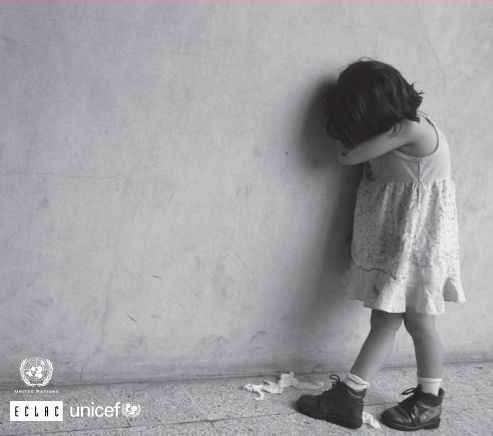The document produced jointly by ECLAC, UNICEF and the Office of the Special Representative of the Secretary-General on Violence against Children, recommends concrete actions for addressing violence against children and adolescents within the framework of the response to the COVID-19 crisis.
In the time of COVID-19, children and adolescents in Latin America and the Caribbean have been and continue to be exposed to greater risk of becoming victims of violence in the home, while they also enjoy fewer protection factors, according to a document published by ECLAC, the United Nations Children’s Fund (UNICEF) and the Office of the Special Representative of the Secretary-General on Violence against Children.
The document entitled ‘Violence against children and adolescents in the time of COVID-19’ warns that recent estimates point to a prevalence of 55% of physical aggression and 48% of psychological aggression in child-rearing in Latin America and the Caribbean.
It adds that, in the context of containing the pandemic, protection factors have eroded while the risk of violence has intensified. On the one hand, there is a lower capacity to detect episodes of violence due to physical isolation and the suspension of in-person activities at educational institutions and early childhood development centers; a reduction in States’ social coverage; and the economic crisis, which has had a negative impact on household income levels.
Compounding all this is the fact that there is limited internet access and coverage and the generational gap in knowledge of the digital environment limits adults’ adequate supervision and guidance of children who spend more time online now.
Furthermore, the report warns that there has been an exacerbation of the risk factors for children and adolescents to become victims of violence in the home. These include an increase in reports of violence against women (which is closely tied to the violence perpetrated against children and adolescents); heightened stress and anxiety; the economic impact on childhood and adolescence; and the fact that both children and adolescents, as well as perpetrators of sexual violence, are engaged in more online activity.
To address violence against children and adolescents within the framework of the response to the COVID-19 crisis, the document proposes the following recommendations for enhancing the policies, programs and actions that existed prior to the crisis:
- Put children at the center of policies and plans for the economic recovery of countries in order to roll back the increase in poverty and eradicate historic inequities that perpetuate structural challenges, such as gender-based violence and violence against children and adolescents, while at the same time rebuilding trust in democratic institutions.
- Optimize resources through the alignment of services that, among other things, allows for addressing cases of violence against women, and against children and adolescents, in a coordinated way; that expands the number of recipients of public assistance services; that provides specific and differentiated treatment for populations that were already vulnerable; and that promotes the care economy and the balanced distribution of roles and tasks.
- Provide mental health care and psychosocial support universally and free of charge to prevent and treat mental health disorders such as depression, anxiety, suicidal thoughts, and stress in parents and caregivers as well as in children and adolescents themselves, while also promoting assertive parenting and communication practices in the home.
- Ensure universal Internet access to all children and adolescents in unserved areas, as well as the distribution of electronic devices to children and adolescents to ensure their continued education.
- Protect children against online violence, spreading messages about safe and responsible online behavior and adopting concrete measures to adequately combat violence on the Internet.
- Guarantee universal social protection for families including cash stimulus, universal health coverage and recognizing childhood protection, mental health and education as essential services and part of a rights-based, cross-sector response.
- Make a sustained investment in childhood and strengthen services for children’s welfare and protection vis-à-vis all forms of violence.
- Promote gender-based labor policies aimed at supporting positive parenting.
- Involve children and adolescents in creating solutions and opportunities at the community, local, regional and national levels.
For more information: https://www.cepal.org/en/publications/46486-violence-against-children-and-adolescents-time-covid-19.




















